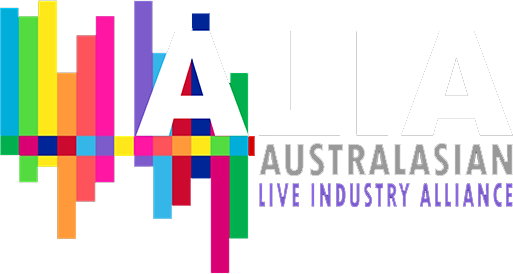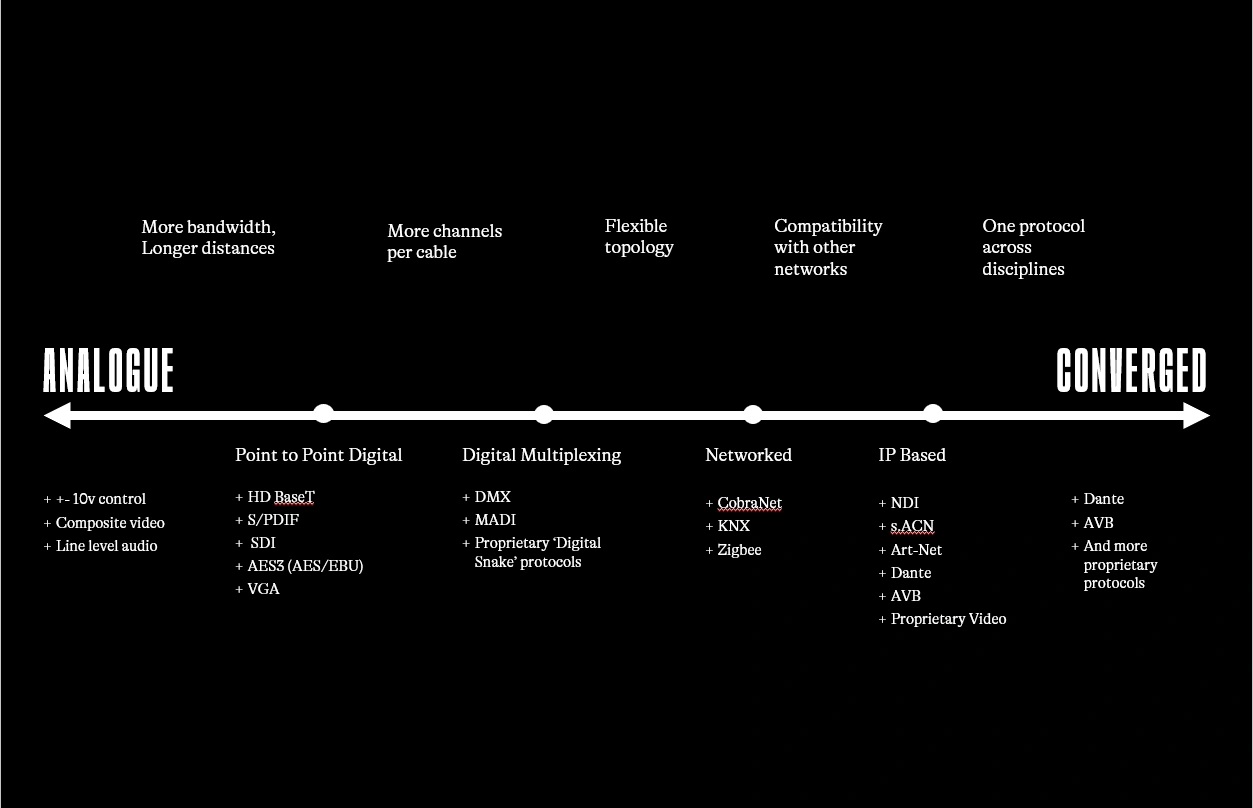When it comes to technology, there’s a question that surfaces time and time again: when is it appropriate to implement the next big thing?
There are pros and cons to being an early adopter – you may be at the cutting edge, but you also risk encountering unprecedented issues compared with tried-and-true tech solutions.
This is as true of your mobile phone as it is of the systems we implement in a theatre, and we frequently find ourselves discussing whether a given technology has matured to the point that it could – and more importantly, should – be used in a performance space.
Often, clients ask us whether we recommend analogue or digital systems for video, audio and lighting. Here, we’ll consider their relative merits and suitability for theatre and performance venues.
Defining digital
First, it’s important to make a distinction. A lot of the time, what people think of as analogue technology – where you plug a cable into a socket to transmit light, sound or moving image – is actually digital. True analogue systems are increasingly rare in performance venues.
Think of it this way: when analogue CRT televisions were the standard, you’d plug in your RCA cables – the red, white and yellow – and they’d send electric signals straight to the screen, making it brighter and darker until your picture formed.
Now, while modern televisions with HDMI inputs might resemble an old CRT set in that you plug your cable into point A to transmit data to point B, the cable carries a digitally encoded signal with a lot more information. For clarity, we’ll refer to these sorts of connections as ‘point-to-point digital’.
If you picture a spectrum of technology, point-to-point digital systems are your most basic examples – while more modern solutions occupy a space further on the same technological spectrum.
A word on protocols
Another key point is that each of the technological solutions available are likely to have their own set of protocols for formatting and processing data. We’ve already referenced one: HDMI, or high-definition multimedia interface.
At any given time, these protocols will be in differing points of adoption and maturity within the industry – and some will be inherently more suitable for specific tasks than others.
This is an important consideration, not just in terms of cost and longevity of the system – but also in terms of the training and skill development you may need for staff (both current and future).
Point-to-point audio and lighting
When it comes to lighting and audio tech, these point-to-point digital systems are unidirectional – they send a signal from one point (usually a console or mixer) to the next.
You can envision these systems as resembling a tree. Data from the ‘roots’ travels up the central ‘trunk’ before being distributed through the ‘branches’ of the system.
While this tree-style topology is an effective and cost-efficient solution, it’s not without drawbacks. They mean you must install and maintain dedicated cabling to transmit your signal, limiting where you place your console or mixer in a theatre.
Ethernet-based audio and lighting systems
More modern digital solutions do away with the tree-style topology and adopt an ethernet-based system instead. Rather than your cabling routing to a central point, these systems function much like the ethernet networks you’re likely already using at home or in the office – you simply plug in wherever you need to and go from there.
One advantage of these systems is that they unlock a lot more flexibility when designing your building. For example, you can have a console in one room controlling the lights in another. Or, you could have the audio of a band performing routed to a recording studio on the other side of the same building.
Regarding lighting in particular, ethernet systems also allow you to use more complex technology that would have previously been too resource-intensive for a point-to-point system.
Video systems
Everything we’ve discussed applies equally to video, but this subject bears further examination.
Transmitting video signals is a necessarily data-intensive process. The image must be captured by a camera as light and then encoded in a digital format, transported and decoded on the other end. This complex process can create latency – a perceptible delay between sending and receiving the data signal. While latency can occur in audio and lighting systems as well, it tends to be particularly apparent when working with video.
In the context of a theatre, video latency can be an issue. Think of an orchestra following the direction of an on-screen conductor; any perceptible delay will impact the outcome of the performance. For this reason, some venue operators prefer point-to-point digital protocols for video, like HDMI or SDI (serial digital interface).
However, it’s worth noting that we’ve conducted our own benchmark video tests between HDMI, SDI and several ethernet protocols on both domestic and commercial monitors and found little difference between them.
In summary
Generally, ethernet-based systems make sense for a lot of projects. However, it’s not a one-size-fits-all solution. Depending on the size and needs of a venue, a hybrid approach that uses a combination of ethernet nodes and point-to-point might be the best fit.
For example, a venue regularly hosting touring musicians may be better served by having a point-to-point option that allows a band to connect to a sound mixer without having to interface with an ethernet network. Similarly, ensuring there’s redundancy via a backup point-to-point lighting or video system might make sense for venues of a certain type or scale.
Overall, your individual needs will dictate the technology that makes the most sense for you – not the other way around.
Supplied Studio Entertech




















































